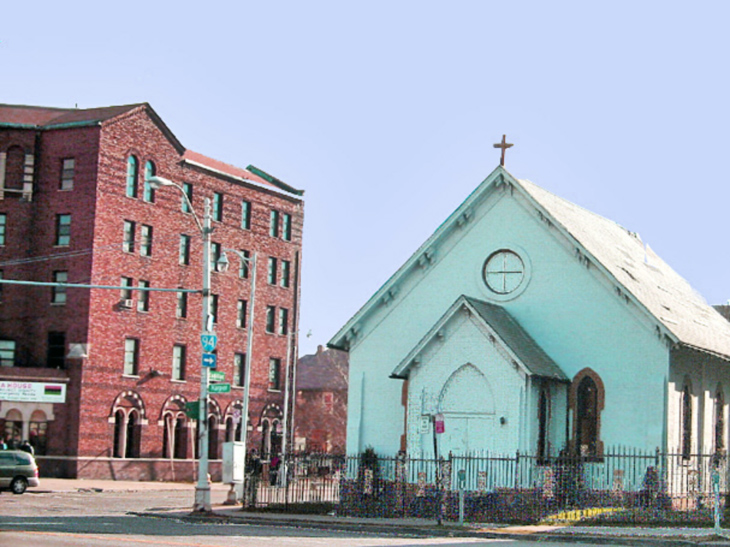

Some may be surprised to learn that some areas within the 144 square mile expanse that is now city of Detroit were once rural hamlets. Norris—where the Philetus Norris home is located—is one such former village. Leesville is another. Charles Lee settled the area where the Church of Our Savior is now located prior to the Civil War. A small community developed, presumably most of them farmers. The area became known as Leesville. Roman Catholics in this area attended services at Assumption of the Blessed Virgin Mary parish, then and now located at Gratiot and East Six Mile. Leesville Methodist was founded to serve members of that faith. That church survived into the area when Detroit annexed this part of Hamtramck Township. It merged with another Methodist Church to form Bethany Methodist with a church located at Gratiot and Georgia.
John and Esther Aspinwall Cooper, born in England, settled in Leesville in 1853. He was a farmer but made bricks in his back yard. Apparently most or all of the brick structures in Leesville were produced by Mr. Cooper. A post office opened in Leesville in May, 1872 but was closed in January, 1876. Residents protested and post office was reopened in August 1876. Postal officials again closed their office in Leesville in February, 1885 but residents got it reopened in January, 1886. It closed for good on April 8, 1896 when Leesville was annexed by the city of Detroit.
In the mid-1860s, members of the Episcopalian faith wished to organize their own parish. This began as the Gratiot Avenue mission of St. John’s Episcopal with the first meetings held in a local school building. On September 28, 1874, members of this Episcopal group secured title to the land at Harper and Cadillac. Apparently, the land was given to the parish by local landowner who stipulated that if the area were not used for a church it would revert to him. The parish quickly began building the church that you see. It was designed and built by William Cooper, the son of Leesville brick maker, Henry Cooper. It is a simple but attractive rectangular structure with a pointed arch doorway. Mr. Cooper attractively designed and built hoodmolds for his windows in brick. Originally, there was a belfry but it was damaged in a storm and never replaced.
I believe that this remained an active Episcopalian parish until 1966. It is difficult to learn much about this church or much about Leesville. The City of Detroit’s Local Historic District commemorates Leesville but, I presume, there are no other surviving structures other than this church. The University of Michigan’s Bentley Library has about one dozen boxes of records of this parish covering the span from 1885 to 1966, so a dedicated person could trace some of its history.
Date of construction: 1874 and 1875
Builder: William Cooper
Use in 2012: This church is the home of the Living Truth Temple.
City of Detroit Designated Historic District; Listed
State of Michigan Registry of Historic Sites; Not listed
National Register of Historic Places: Not listed
Photograph: Andrew Chandler, December, 2004
Description updated: December, 2012